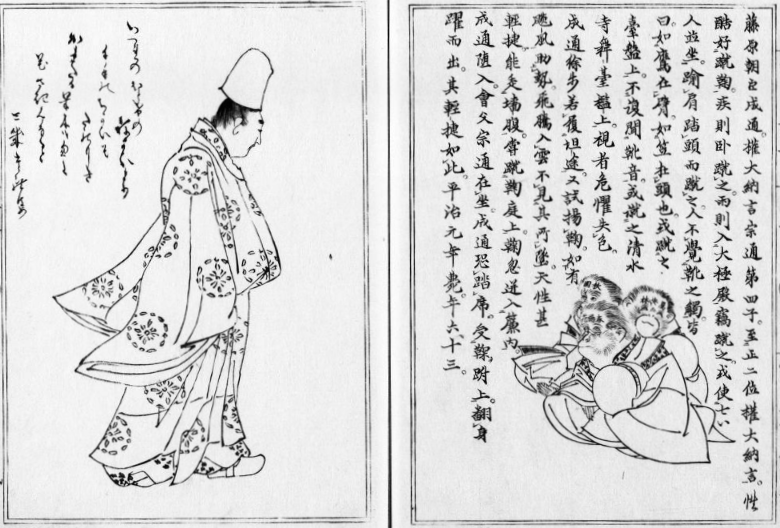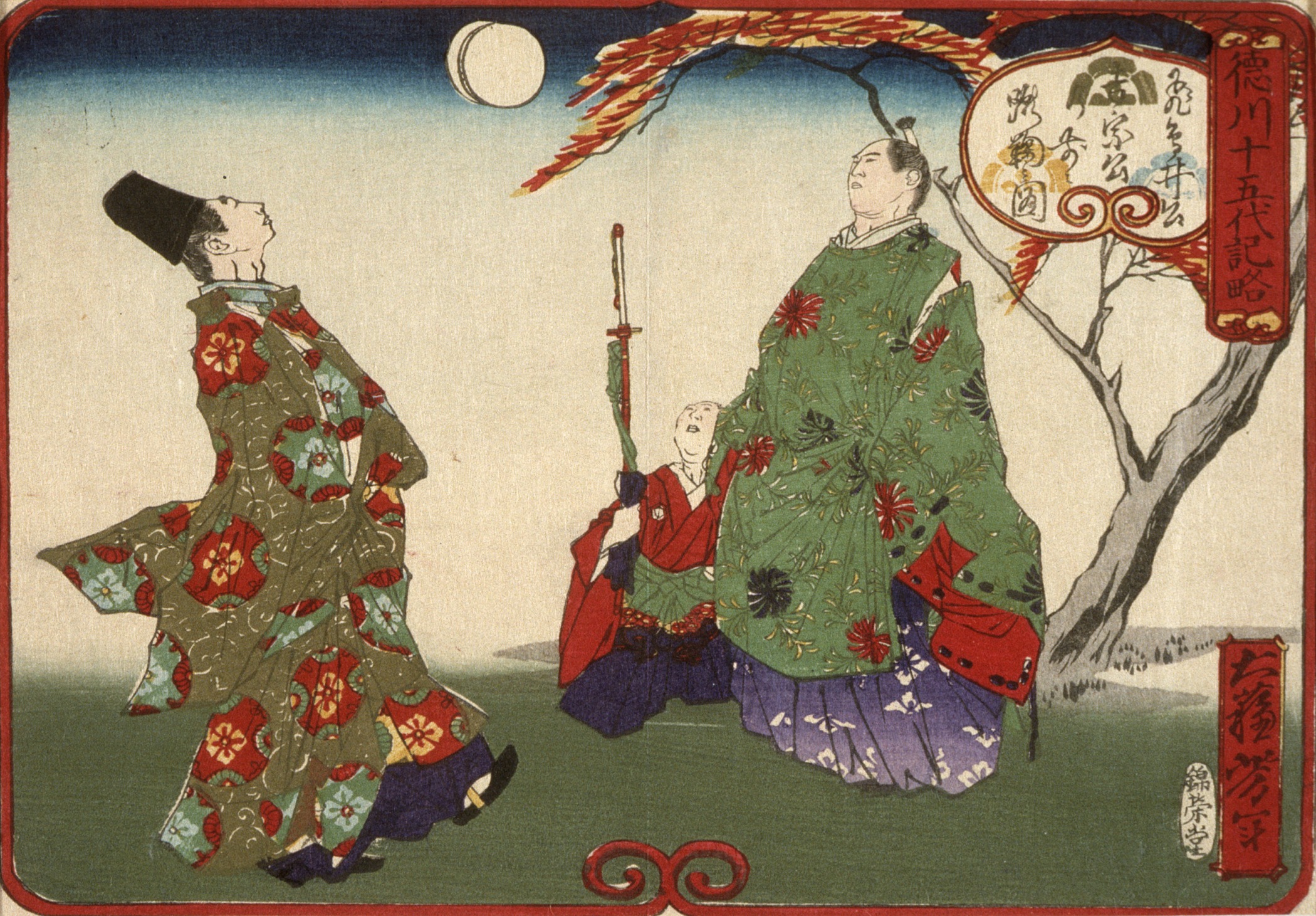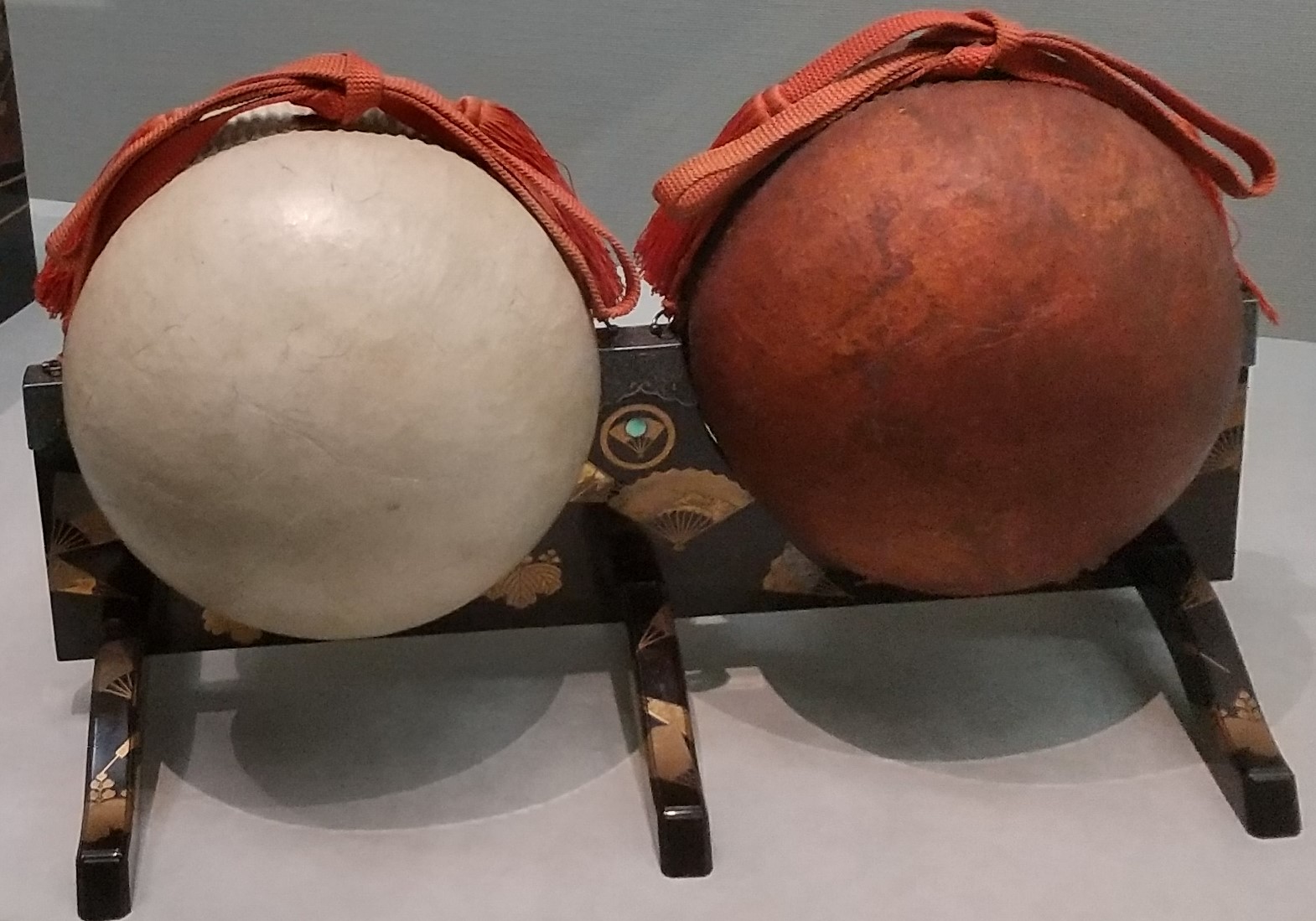kemari on:
[Wikipedia]
[Google]
[Amazon]
 is an athletic game that was popular in
is an athletic game that was popular in

 The earliest ''kemari'' was created under the influence of the Chinese sport ''
The earliest ''kemari'' was created under the influence of the Chinese sport '' In the
In the
 is an athletic game that was popular in
is an athletic game that was popular in Japan
Japan is an island country in East Asia. Located in the Pacific Ocean off the northeast coast of the Asia, Asian mainland, it is bordered on the west by the Sea of Japan and extends from the Sea of Okhotsk in the north to the East China Sea ...
during the Heian
The Japanese word Heian (平安, lit. "peace") may refer to:
* Heian period, an era of Japanese history
* Heian-kyō, the Heian-period capital of Japan that has become the present-day city of Kyoto
* Heian series, a group of karate kata (forms)
* ...
(794–1185) and Kamakura period
The is a period of History of Japan, Japanese history that marks the governance by the Kamakura shogunate, officially established in 1192 in Kamakura, Kanagawa, Kamakura by the first ''shōgun'' Minamoto no Yoritomo after the conclusion of the G ...
(1185–1333). It resembles a game of keepie uppie or hacky sack. The game was popular in Kyoto
Kyoto ( or ; Japanese language, Japanese: , ''Kyōto'' ), officially , is the capital city of Kyoto Prefecture in the Kansai region of Japan's largest and most populous island of Honshu. , the city had a population of 1.46 million, making it t ...
, the capital, and the surrounding Kinki
The or the lies in the southern-central region of Japan's main island Honshū. The region includes the prefectures of Nara, Wakayama, Kyoto, Osaka, Hyōgo and Shiga, often also Mie, sometimes Fukui, Tokushima and Tottori. The metropolit ...
(Kansai region
The or the lies in the southern-central region of Japan's main island Honshū. The region includes the prefectures of Nara, Wakayama, Kyoto, Osaka, Hyōgo and Shiga, often also Mie, sometimes Fukui, Tokushima and Tottori. The metropol ...
), and over time it spread from the aristocracy to the samurai
The samurai () were members of the warrior class in Japan. They were originally provincial warriors who came from wealthy landowning families who could afford to train their men to be mounted archers. In the 8th century AD, the imperial court d ...
class and ''chōnin
was a social class that emerged in Japan during the early years of the Tokugawa period. In the social hierarchy, it was considered subordinate to the samurai warrior class.
Social class
The ''chōnin'' emerged in ''joka-machi'' or castle t ...
'' class. Nowadays, ''kemari'' is played as a seasonal event mainly at Shinto shrines
A Stuart D. B. Picken, 1994. p. xxiii is a structure whose main purpose is to house ("enshrine") one or more kami, , the deities of the Shinto religion.
The Also called the . is where a shrine's patron is or are enshrined.Iwanami Japanese dic ...
in the Kansai region, and players play in a costume called ''kariginu'' ( :ja:狩衣), which was worn as everyday clothing by court nobles during the Heian period.
History

 The earliest ''kemari'' was created under the influence of the Chinese sport ''
The earliest ''kemari'' was created under the influence of the Chinese sport ''cuju
''Cuju'' or ''Ts'u-chü'' ( zh, t=蹴鞠, p=cù jū) is an ancient Chinese football game, that resembles a mix of basketball, association football and volleyball. FIFA cites cuju as the earliest form of a kicking game for which there is docume ...
'', which has the same kanji
are logographic Chinese characters, adapted from Chinese family of scripts, Chinese script, used in the writing of Japanese language, Japanese. They were made a major part of the Japanese writing system during the time of Old Japanese and are ...
. It is often said that the earliest evidence of ''kemari'' is the record of 644 CE in the ''Nihon Shoki
The or , sometimes translated as ''The Chronicles of Japan'', is the second-oldest book of classical Japanese history. It is more elaborate and detailed than the , the oldest, and has proven to be an important tool for historians and archaeol ...
'', but this theory is disputed. In 644, Prince Naka-no-Ōe and Nakatomi no Kamatari
, also known as , was a Japanese politician and aristocrat who, together with Prince Naka no Ōe (later Emperor Tenji), carried out the Taika Reform. He was the founder of the Fujiwara clan, the most powerful aristocratic family in Japan durin ...
, who later initiated the Taika Reforms
The were a set of doctrines established by Emperor Kōtoku (孝徳天皇 ''Kōtoku tennō'') in the year 645. They were written shortly after the death of Prince Shōtoku and the defeat of the Soga clan (蘇我氏 ''Soga no uji''), uniting Japan ...
, became friends during a ball game described as "打鞠", but it may have been a hockey-like ball game using a cane instead of ''kemari''. The earliest reliable documentary evidence of the word ''kemari'' (蹴鞠) is found in a record of an annual event called ''Honchō gatsuryo'' ( :ja:本朝月令) written in the middle of the Heian period. According to the records, a ''kemari'' games were played in May 701.
''Kemari'' became popular as a game for the nobility in the late Heian period
The is the last division of classical Japanese history, running from 794 to 1185. It followed the Nara period, beginning when the 50th emperor, Emperor Kammu, moved the capital of Japan to Heian-kyō (modern Kyoto). means in Japanese. It is a ...
(794–1185) in the 11th century, and in the 12th century, Fujiwara no Narimichi ( :ja:藤原成通) and Nanba Yorisuke ( :ja:難波頼輔) gained fame as masters of ''kemari''. Fujiwara no Narimichi had made more than 50 visits to the Kumano Hongū Taisha to pray that his ''kemari'' skills would improve, and he had performed the ''kemari'' feat known as a ''ushiro mari'' (後ろ鞠, backward ball) in front of the shrine where Susanoo was enshrined. This technique is a keepie uppie performed on the heel.
It reached its peak between the end of the 12th century and around the 13th century in the early Kamakura period
The is a period of History of Japan, Japanese history that marks the governance by the Kamakura shogunate, officially established in 1192 in Kamakura, Kanagawa, Kamakura by the first ''shōgun'' Minamoto no Yoritomo after the conclusion of the G ...
(1185–1333), and ''kemari'' games were often played during the reign of Minamoto no Yoriie
was the second ''shōgun'' (1202–1203) of Japan's Kamakura shogunate, and the first son of first shōgun Yoritomo. His Dharma name was Hokke-in-dono Kingo Da'i Zengo (法華院殿金吾大禅閤).
Life
Minamoto no Yoriie was born to Hōj ...
. This led to the establishment of a variety of new rules, equipment and techniques, and the completion of a structured art form called ''kemaridō'' (蹴鞠道). In the Kamakura period, ''kemari'' became popular among the samurai
The samurai () were members of the warrior class in Japan. They were originally provincial warriors who came from wealthy landowning families who could afford to train their men to be mounted archers. In the 8th century AD, the imperial court d ...
class, and in the Muromachi period
The , also known as the , is a division of Japanese history running from approximately 1336 to 1573. The period marks the governance of the Muromachi or Ashikaga shogunate ( or ), which was officially established in 1338 by the first Muromachi ...
(1336–1573), ''kemari'', along with various other performing arts such as '' waka'' (Japanese poetry) and the Japanese tea ceremony
The Japanese tea ceremony (known as or lit. 'Hot water for tea') is a Culture of Japan, Japanese cultural activity involving the ceremonial preparation and presentation of , powdered green tea, the procedure of which is called .
The term "Japa ...
, was regarded as one of the art forms that the samurai class was encouraged to master.
 In the
In the Sengoku period
The was the period in History of Japan, Japanese history in which civil wars and social upheavals took place almost continuously in the 15th and 16th centuries. The Kyōtoku incident (1454), Ōnin War (1467), or (1493) are generally chosen as th ...
(1467–1615), sumo
is a form of competitive full-contact wrestling where a ''rikishi'' (wrestler) attempts to force his opponent out of a circular ring (''dohyō'') or into touching the ground with any body part other than the soles of his feet (usually by th ...
became popular and ''kemari'' declined, but in the Edo period
The , also known as the , is the period between 1600 or 1603 and 1868 in the history of Japan, when the country was under the rule of the Tokugawa shogunate and some 300 regional ''daimyo'', or feudal lords. Emerging from the chaos of the Sengok ...
(1683–1868) it became popular again as a game played by ''chōnin
was a social class that emerged in Japan during the early years of the Tokugawa period. In the social hierarchy, it was considered subordinate to the samurai warrior class.
Social class
The ''chōnin'' emerged in ''joka-machi'' or castle t ...
'' class in the Kinai
is a Japanese term denoting an ancient division of the country. ''Kinai'' is a name for the ancient provinces around the capital Nara and Heian-kyō. Nussbaum, Louis-Frédéric. (2005). "''Kinai''" in . The five provinces were called ''go-kin ...
(Kansai region).
In the past, aristocrats living in Kyoto
Kyoto ( or ; Japanese language, Japanese: , ''Kyōto'' ), officially , is the capital city of Kyoto Prefecture in the Kansai region of Japan's largest and most populous island of Honshu. , the city had a population of 1.46 million, making it t ...
used to play ''kemari'' as an annual event on New Year's Day, January 4. Emperor Meiji
, posthumously honored as , was the 122nd emperor of Japan according to the List of emperors of Japan, traditional order of succession, reigning from 1867 until his death in 1912. His reign is associated with the Meiji Restoration of 1868, which ...
feared that the rapid modernization of Japan would lead to the loss of various traditional Japanese cultures, and in 1903, an association was established to preserve ''kemari'' by contributing an imperial grant. Today, ''kemari'' is performed as a seasonal event in Shinto shrines
A Stuart D. B. Picken, 1994. p. xxiii is a structure whose main purpose is to house ("enshrine") one or more kami, , the deities of the Shinto religion.
The Also called the . is where a shrine's patron is or are enshrined.Iwanami Japanese dic ...
around the Kansai region
The or the lies in the southern-central region of Japan's main island Honshū. The region includes the prefectures of Nara, Wakayama, Kyoto, Osaka, Hyōgo and Shiga, often also Mie, sometimes Fukui, Tokushima and Tottori. The metropol ...
such as Shimogamo Shrine, Shiramine Jingū, Fujimori Shrine ( :ja:藤森神社), Tanzan Shrine, Hirano Shrine and Kotohira-gū. Seidaimyōjin (精大明神), enshrined as one of the sessha (auxiliary shrine) of Shiramine Shrine, is the kami
are the Deity, deities, Divinity, divinities, Spirit (supernatural entity), spirits, mythological, spiritual, or natural phenomena that are venerated in the traditional Shinto religion of Japan. ''Kami'' can be elements of the landscape, forc ...
of the ''mari'' (''kemari'' ball) and is therefore respected by players of various ball games, mainly association football
Association football, more commonly known as football or soccer, is a team sport played between two teams of 11 Football player, players who almost exclusively use their feet to propel a Ball (association football), ball around a rectangular f ...
.
George H. W. Bush
George Herbert Walker BushBefore the outcome of the 2000 United States presidential election, he was usually referred to simply as "George Bush" but became more commonly known as "George H. W. Bush", "Bush Senior," "Bush 41," and even "Bush th ...
played the game on one of his presidential visits to Japan.
Description
It is a non-competitive sport. The object of Kemari is to keep oneball
A ball is a round object (usually spherical, but sometimes ovoid) with several uses. It is used in ball games, where the play of the game follows the state of the ball as it is hit, kicked or thrown by players. Balls can also be used for s ...
in the air, with all players cooperating to do so. Players may use any body part with the exception of arms and hands: their head, feet, knees, back, and depending on the rules, elbows to keep the ball aloft. The ball, known as a ''mari'', is made of deerskin with the hair facing inside and the hide on the outside. The ball is stuffed with barley grains to give it shape. When the hide has set in this shape, the grains are removed from the ball, and it is then sewn together using the skin of a horse. The one who kicks the ball is called a ''mariashi.'' A good mariashi makes it easy for the receiver to control the mari, and serves it with a soft touch to make it easy to keep the mari in the air.
''Kemari'' is played on a flat ground, about 6–7 meters squared. The uniforms that the modern players wear are reminiscent of the clothes of the Heian period and include a crow hat. This type of clothing was called ''kariginu'' ( :ja:狩衣) and it was fashionable at that time.
See also
* Mari (Noh play)References
External links
* https://www.youtube.com/watch?v=UO3vRH2z8jo {{Authority control Heian period Ball games Sport in Japan Traditional football